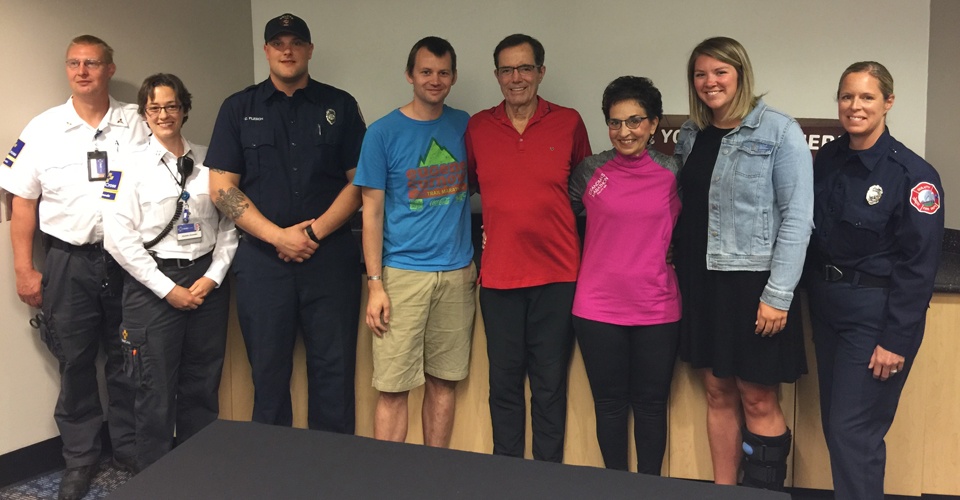For a lucky gentleman in Duluth, MN, his neighborhood YMCA was ready to respond when he needed them most.
According to an article in the Duluth News Tribune, a fit and healthy 71-year-old mountain climber was enjoying a typical day at the Y, when he suffered an ST-elevated myocardial infarction episode, or STEMI:
Tom Malterer's story starts last year on June 21, a Wednesday, when he and [his wife] Bonnie were at the downtown YMCA, working out .... It was their 31st wedding anniversary.
A month and a day earlier, Tom had hiked from the north to the south rim of the Grand Canyon, a distance of 24.3 miles with an elevation change of more than 10,000 feet .... He was a "highpointer," well on his way to hiking to the high points of each of the 48 contiguous states. Over the previous three weeks, he had experienced some pain in his shoulders and some brief pains in his lungs, he recalls. He figured it was just incidental, age-related training pains.
On that June 21, they followed the routine at the Y that they follow every Monday, Wednesday and Friday. Finished, Tom checked with Bonnie, who was still on a stationary bike, and told her he'd meet her in the car.
"And (I) went into the shower and went up to reach the lock in my locker — totally went out," Tom related.
Cheryl Podtburg, Aquatic Safety Coordinator for the Downtown Branch of the Duluth Area Family YMCA and American Safety & Health Institute (ASHI) Training Center director, explains how YMCA team members Emily Boyle, Kathy Davy, and Max Rubesch used their training to help save Tom.
Emily and Kathy were at the front desk when someone ran up to say that a man had fallen, hit his head in the men’s locker room, and didn’t seem to be doing well. About the same time, another employee had asked Max, one of the Y’s lifeguards, to respond to someone who wasn’t breathing in the locker room. Max met Emily and the AED in the locker room, while Kathy called 911.
Working together until relieved by the Duluth Fire Department and Gold Cross Ambulance, Emily and Max used CPR and the AED to help save Tom.
Cheryl, who trains YMCA staff in basic emergency care as well as the more advanced training required for YMCA lifeguards, was quick to point out that all three of her staffers were heroes that day.
“It’s hard to get non-lifeguard employees to understand why their emergency care training is so important. Many of them are intimidated by the responsibility that comes with such knowledge, and almost don’t want to know how to help so they won’t be called on to respond. I explain in all my classes that every single person in the rescue chain has a critical role, and that includes the one calling 911. That person is as important as the hands-on rescuer,” she says.
Tom Malterer recovered from his STEMI, returning home two days after his admittance to the hospital. According to the newspaper article, “In about a week, he was walking with his daughter to three more high points — Tennessee, Georgia and South Carolina — bringing his total to 43.”
On the anniversary of that fateful day, the Malterers made a special trip to their YMCA, not to work out this time, but to thank the team whose confident response in a time of crisis saved Tom’s life.
All of us at Health & Safety Instintute (HSI) would also like to thank the Duluth Area Family YMCA for a job well done!
If you have an emergency care student you would like to reward with an ASHI or MEDIC First Aid Good Samaritan certificate, let us know by clicking the button below.








.png?width=600&name=HSI-CTA-EmergencyCareTraining%20(1).png)











Comments